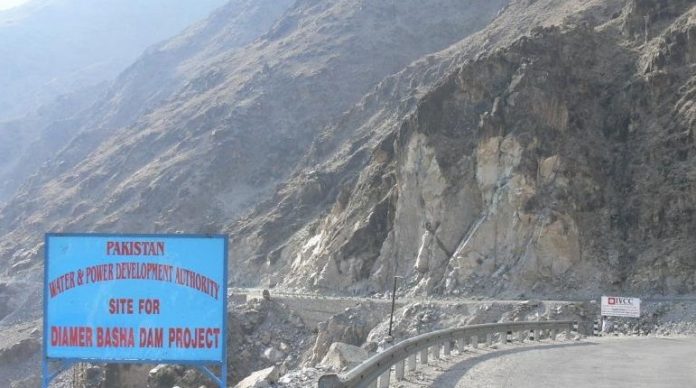CHILAS: The Diamer Basha Dam Project is advancing steadily, with construction ongoing around the clock at 14 critical sites. The project, managed by WAPDA, is located across the River Indus, 40 km downstream of Chilas town.
WAPDA Chairman Engr Lt Gen Sajjad Ghani (Retd) visited the Diamer Basha Dam site to inspect the construction activities. During his visit, he reviewed the progress at various key points, including the diversion canal, guide wall, diversion tunnel, upstream and downstream coffer dams, permanent bridge, and the left and right abutments of the main dam.
The project team, comprising the CEO of Diamer Basha Dam Company, the General Manager/Project Director of the Diamer Basha Dam Project, consultants, and contractors, briefed the Chairman on the status of each site. They reported that the diversion system is functioning satisfactorily. The permanent access bridge downstream of the main dam site has been completed, and the adjacent approach roads are expected to be finished by next month.
The Chairman instructed the consultants and contractors to strictly adhere to the established construction standards to ensure the quality of work.
During his visit, the Chairman also participated in a jirga with Gilgit-Baltistan ministers and the civil administration, discussing the resettlement of affected communities, particularly the chulha package. He emphasized that WAPDA values the sacrifices made by the locals for the project’s construction and is committed to improving their lives through economic empowerment and social upliftment.
WAPDA is allocating Rs. 78.5 billion for the resettlement of affected individuals and for development projects in health, education, and infrastructure within the project area. Additionally, locals are being prioritized for employment opportunities at the project.
The Diamer Basha Dam, the highest roller-compacted concrete (RCC) dam in the world at 272 meters, is scheduled for completion in 2028. The dam will have a gross water storage capacity of 8.1 MAF, irrigating 1.23 million acres of land. With an installed power generation capacity of 4,500 MW, the project will supply 18 billion units of green, clean, and affordable electricity to the national grid annually.




